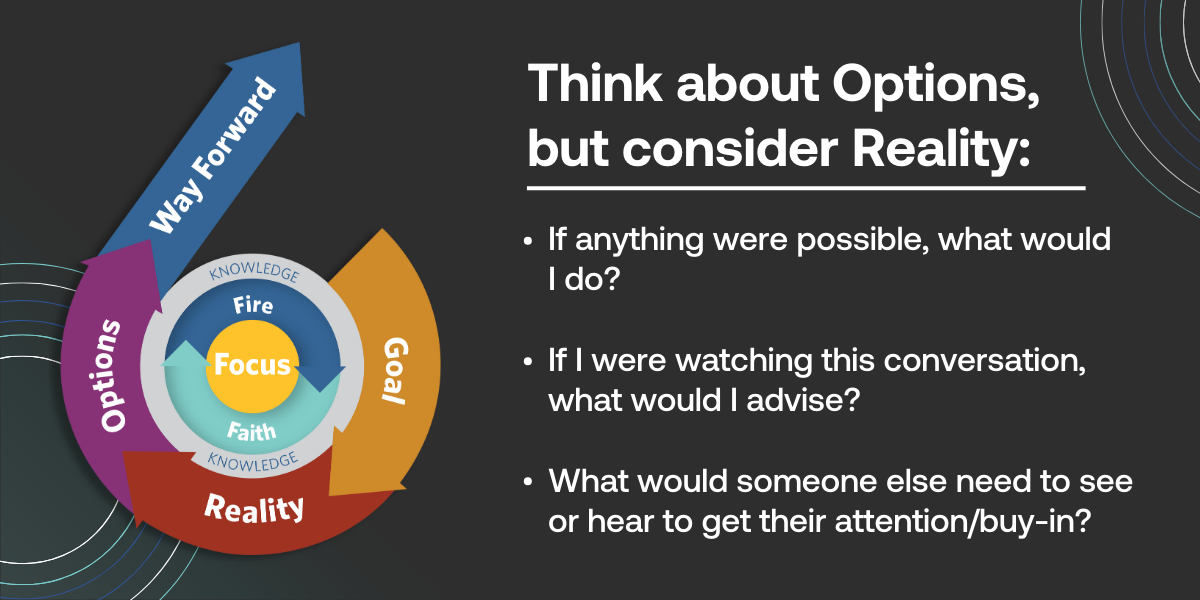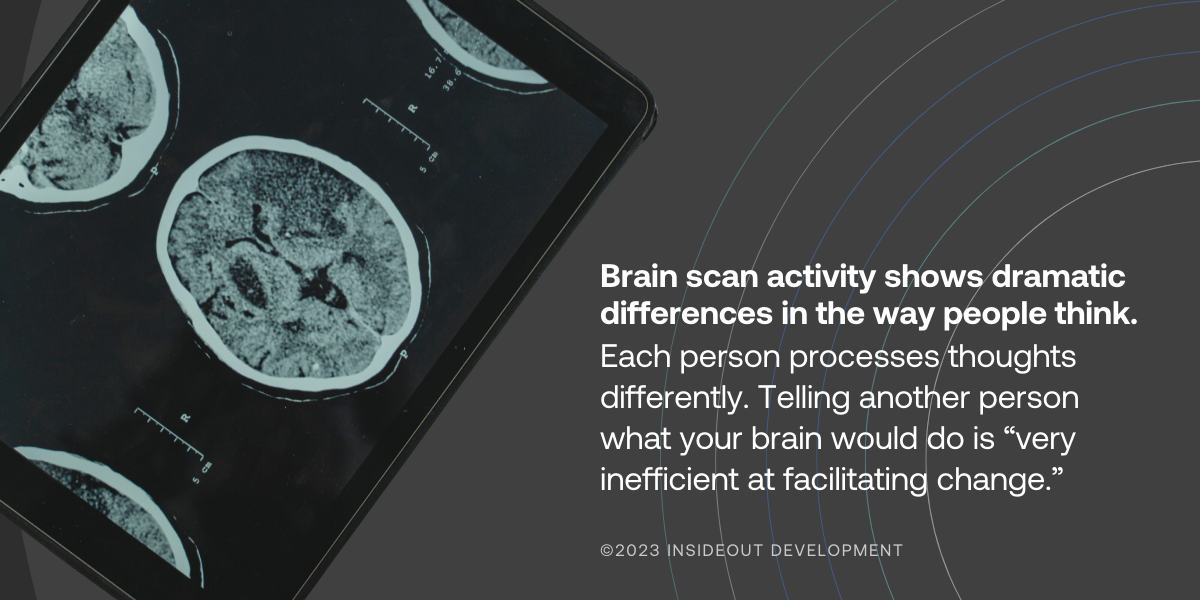The third component of the GROW Model, the “O”, represents Options, which are all the potential solutions the decision-maker or problem-solver generates before selecting a path forward.
In this blog, learn how to leverage your current Reality to ideate numerous possible solutions to help you achieve the Goal you set for yourself or your organization.
Options and Convergent vs Divergent Thinking
In decision-making, many people get stuck talking about Reality, but the key element in problem-solving is using Reality to generate solutions. When it comes to generating and processing solutions, there are two distinct thought processes:
- Divergent thinking
- Convergent thinking

Anne Manning, an instructor at Harvard University explains:
“Divergent and convergent thinking is the most fundamental element of creative problem-solving. [They] are different parts of the same process…Divergent thinking is, in essence, coming up with ideas…Convergent thinking is about taking ideas, thinking about them, reflecting on them, improving them, and coming up with decisions.”
Understanding Your Options in the Context of GROW
When following the GROW Model, the performer expands their thinking in the Options phase without being encumbered by the convergent thinking of the Reality phase. At this stage, quantity is better than quality. Generate as many potential solutions — or Options — as possible.
At InsideOut Development, we encourage workshop participants to generate at least 20 Options to solve their problems. Often, their chosen solution ends up being fairly low on their list.

Once all ideas have been expressed, the performer can begin to develop an action plan and process a Way Forward. When thinking about Options, strive to remain unfettered from Reality. Consider questions like:
- If anything were possible, what would I do?
- If I were watching this conversation, what would I advise?
- What would someone else need to see or hear to get their attention/buy-in?
The Science Behind Considering Options
Research psychiatrist Dr. Jeffrey Schwartz and consultant David Rock have performed neuroscientific research that demonstrates the measurable, physical effects of approaches like GROW Coaching.
They observe that brain scan activity shows dramatic differences in the way people think. Each person processes thoughts differently. Because of these differences, giving advice (telling another person what your brain would do) is “very inefficient at facilitating change.”
Unfortunately, this is the most common approach to helping people. Schwartz and Rock found that “for insights to be useful, they need to be generated from within, not given to individuals as conclusions.”

When using the GROW Model in a coaching conversation, the coach should make sure the performer has exhausted all their ideas before adding their own.
Many leaders tend to provide their own ideas too early in the problem-solving process. Hearing options from someone else can cause the mind to revert back to convergent thinking. It can also limit the effectiveness of the eventual solution. It may feel odd or silly, but continue asking “what else” until the performer is out of ideas.
Consider Your Options to Transform Goals Into Results
Generating potential Options is important, but the Goal hasn’t been met until you’ve developed a clear and specific action plan. It’s time to select a Way Forward.
Utilizing the GROW Model for achieving workplace objectives establishes a framework for ongoing performance enhancement, ultimately yielding advantages for individuals, teams, and the entire organization.
Want to see what GROW can do for you? Get in touch with one of our coaching experts and witness your team's performance take off.





